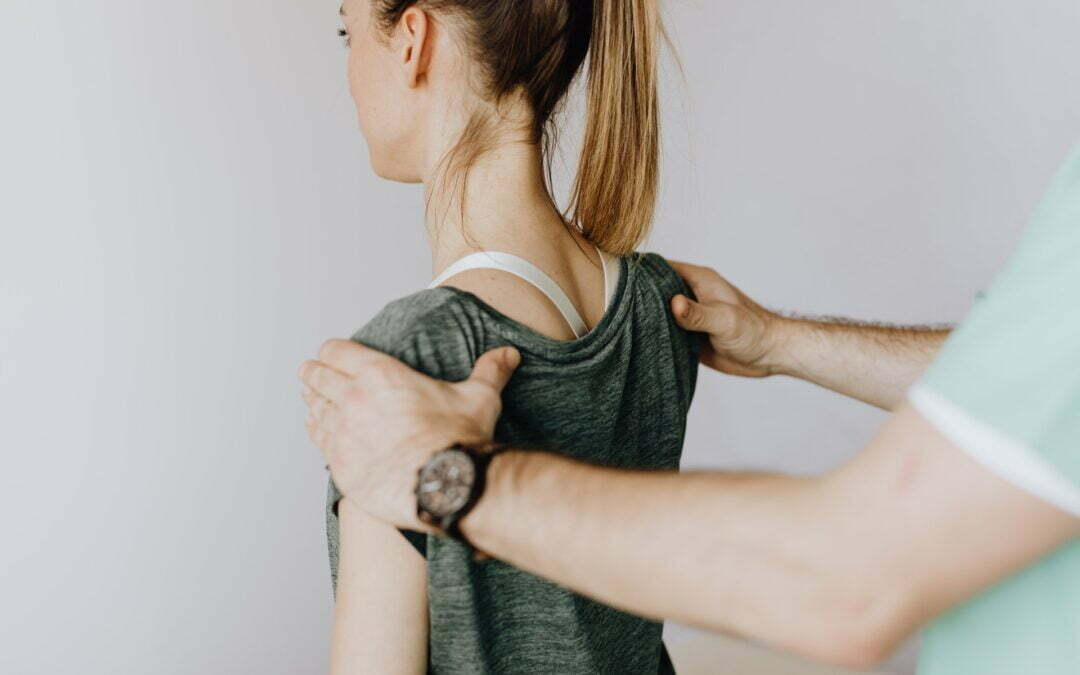It is increasingly common to see people of all ages with stooped, rounded shoulders and a neck bent forward. Upper Crossed Syndrome (UCS), sometimes also called Upper Cross Syndrome, is caused by an imbalance in the flexor and extensor muscles of the chest and upper back. Though those with a sedentary lifestyle are most at risk for the condition, it is not uncommon to find Upper Crossed Syndrome in athletes, particularly swimmers and weight lifters. Headaches, neck pain and pain in the jaw may point to a case of UCS.
Long hours of sitting at a computer, watching TV and talking on the phone contribute to bad posture, weakening the rhomboid (upper back) and neck flexor (front of neck) muscles while tightening and shortening the pectoral (chest) and upper trapezius (back of shoulder) muscles. Thus, the crossed pattern emerges. This pattern will tend to pull the spine forward.
To maintain a balanced sitting position, the head must move forward over the pelvis which shortens the sternocleidomastoids (the muscles that extend from the base of the skull just behind the ears to your collar bone). For every inch the head moves forward of the shoulders, the stress on the supporting muscles increases by 10 pounds.
Weight lifters who bench press or do push-ups more than they practice pulling exercises are especially prone to UCS. And as swimmers tend to overuse the muscles in the area of the neck, shoulders and upper back, they tend to develop this as well.
The effects of this condition can harm athletic performance, reducing freedom of movement and inhibiting the ability to breathe fully due to the reduction of space in the abdomen. If not treated, the condition can deteriorate further causing eventual damage to the spine. This happens due to the continual pressure on the front of the vertebrae causing compression and leading to cervical kyphosis.
The best treatment options involve a combination of exercise, physical therapy and chiropractic care. First, a chiropractic adjustment can realign joints that have become misaligned due to tight muscles and bad posture. Proper chiropractic care will help increase range of movement while also allowing your body to relax tightened muscles and stretch shortened muscles. Supportive at-home exercises will further the goal of strengthening weak muscles and stretching tight ones.
Two simple things you can do at regular intervals throughout the day are to tuck your chin back in toward your chest and pull your shoulders back, and hold the position for 30 seconds at a time. Stretching the tight muscles and strengthening the weak ones will help restore proper posture and ensure the condition does not return.
If you need further help with Upper Crossed Syndrome, please give us a call. We’re here to help!

